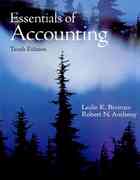Question
1. A firm has the following short-run inverse demand and cost schedules for a particular product: P = 45 - 0.2Q TC = 500 +
1. A firm has the following short-run inverse demand and cost schedules for a particular product:
P = 45 - 0.2Q
TC = 500 + 5Q
a. At what price should this firm sell its product?
b. If this is a monopolistically competitive firm, what do you think would happen as the firm moves toward the long run? Explain
c. Suppose in the long run, that the inverse demand shifts to P = 25 - 0.2Q.What should the firm do? Explain.Provide graphs for both the short-run and long-run scenarios. Make sure your graphs include demand, MR, MC and AC.
d. Suppose in the long run, that the inverse demand shifts to P = 45 - 0.8Q.What should the firm do? Explain.Provide graphs for both the short-run and long-run scenarios. Make sure your graphs include demand, MR, MC and AC.
e. Does the demand in part c or part d represent a change in market share for the representative firm as a result of the entry or exit suggested in part b?
2. a. An industry consists of eight firms with annual sales (in millions) of $200, $300, $900, $600, $300, $700, $500, and $600. What is the industry's C4?
b. An industry consists of four firms with annual sales of $300, $500, $400, and $600, respectively. What is the industry's HHI?
Step by Step Solution
There are 3 Steps involved in it
Step: 1

Get Instant Access to Expert-Tailored Solutions
See step-by-step solutions with expert insights and AI powered tools for academic success
Step: 2

Step: 3

Ace Your Homework with AI
Get the answers you need in no time with our AI-driven, step-by-step assistance
Get Started


